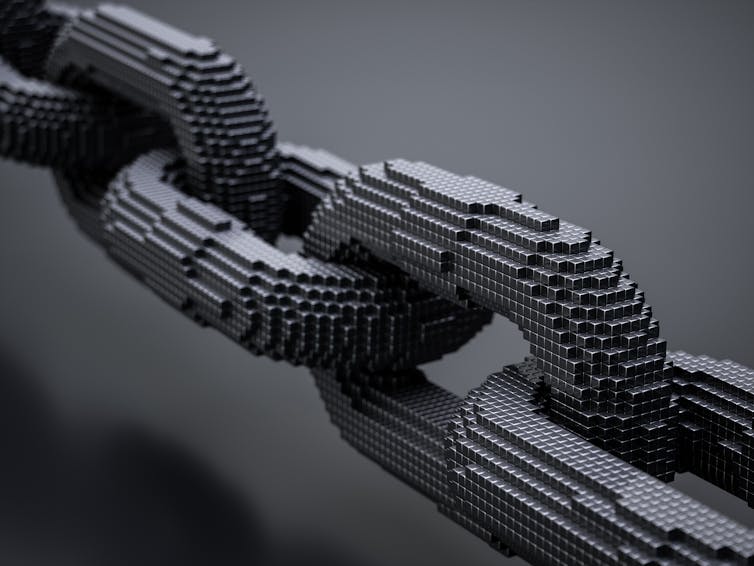Coronavirus: How Blockchain, AI, And 3D Printing Can Help Solve Supply Crisis
What seemed like science fiction a few short weeks ago is now very real. Movies such as Outbreak, Contagion and Virus are looking more like documentaries every day. As we battle COVID-19, a major issue that will only increase is disruption to supply chains.

This disruption has been as devastating as it has been swift. There is unprecedented demand for some products (hand sanitiser has never been so popular), just as production of other products grinds to a halt due to lack of parts.
Our research concerns managing supply chains in a crisis and using technologies such as Artificial Intelligence , 3D Printing and blockchain. These technologies, which also seemed like science fiction just a short time ago, can help the world recover from one crisis and be better prepared for the next one.
Supply and demand
There are a number of challenges these technologies can address. One of these is predicting how people respond to unprecedented events. Unexpected surges in demand for hand sanitisers, for example, have led to perfume factories in France switching to the production of hand gels for hospitals to increase supply.
Decision makers struggle to predict where and when the demand will come, as well as how much of it there will be. It is here where AI can help by identifying patterns and predicting what will happen next. It helps decision makers cope with information overload by capturing and aggregating data from a variety of sources. These techniques are helping to identify high-risk patients in Chicago, even when testing is limited.
Another challenge is maintaining supply, especially when supply chains are reliant on one source that is affected by unexpected disruption. Italy’s battle with the pandemic naturally means supplies of pasta are disrupted elsewhere. This is where 3D printing comes in. 3D printing involves making things layer by layer, directly from digital files. It allows things to be made where and when they are required, without the the expensive tools or moulds that mass production requires. While it might cost more to make a single product, 3D printing can make manufacturing faster and more responsive to changing demand – even for pasta.
So if car factories, for example, take advantage of 3D printing then it suddenly becomes a lot more feasible for them quickly switch to making ventilators for hospitals, as is being suggested by the UK government.
However, this assumes they can access reliable designs and parts lists for these specialised and highly technical products. To this end, efforts are underway to create open-source ventilators. Safety testing and certification will be vital or these well-intentioned efforts may do more harm than good.
Blockchain verification
Fake products and medical equipment have already been an issue during this crisis. So being able to track where things are and where they came from to ensure they are genuine is vital. Blockchain can help because it provides an open, distributed record of transactions. Everyone who needs to be able to see the record is able to – but no one is able to either modify or delete it.
It ensures that transactions are transparent and traceable, turning a supply chain into a digital “chain” of permanently visible “blocks”. This helps to maintain trust between all relevant parties. For example, in China it is being used to trace and confirm the source of public announcements, helping to eliminate fake information.
Additionally, blockchain enables smart contracts, which automatically transfer funds when specified conditions are met. Brooklyn Microgrid uses smart contracts to allow homes with solar panels to sell energy to their neighbours (every unit is automatically counted and paid for).
Blockchain also helps to minimise price inflation, ensures the right equipment gets to the right people and helps distribute the costs fairly and transparently. This may be vital when privately owned factories make goods for public services and should be reimbursed from taxpayers’ money.

Individually, each of these technologies can have an important role in managing supply chain disruption. The greatest value, however, comes when they are combined. This requires investment in skills as well as infrastructure. Private investment from a range of companies is driving development, but coordinated government strategies, from Industrie 4.0 in Germany to Made in China 2025 can help by guiding investments, supporting technology adoption and overcoming a skills shortage.
Aiding the recovery
Managing a crisis involves three sets of decisions around preparing, responding and recovering. As the coronavirus pandemic evolves, the focus is now firmly on response. But the recovery may be even more challenging. The unprecedented scale of the impact looks certain to change lives, whether it is how we interact or even having jobs to go back to after self-isolation.
Panic buying of protective masks and hygiene products is symptomatic of a lack of trust in institutions and their ability to keep us safe. Yet just as science fiction movies see humans pulling together to save the world, the response to this pandemic has seen institutions collaborating to share resources – from hotel rooms to production lines.
Investing in AI, 3D printing and blockchain can help businesses be more responsive to changes in supply and demand and make their supply chains more resilient. By using these technologies in collaboration, we should also be better prepared to predict, respond to and recover from the next crisis that threatens the world.![]()
_____
Ahmad Beltagui, Lecturer in Project and Operations Managment, Aston University; Oscar Rodriguez-Espindola, Senior lecturer in Operations and Supply Chain Management, Aston University, and Soumyadeb Chowdhury, Lecturer Information and Communication Technology, Aston Business School, Aston University
____
This article is republished from The Conversation under a Creative Commons license. Read the original article.



